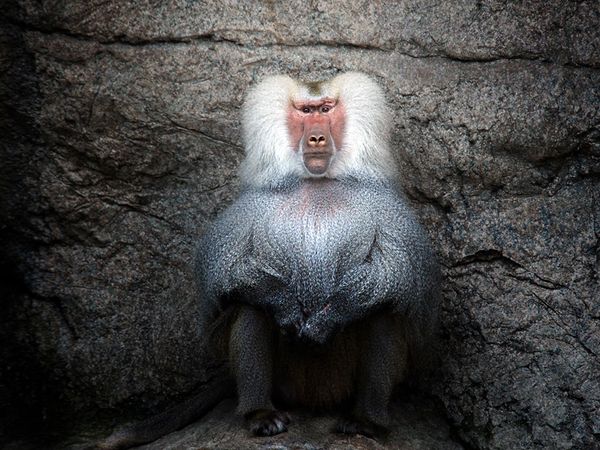The best photos from National Geographic Society, July 2010. 
The
National Geographic Society (NGS
), la cui sede si trova a
Washington, D.C. negli
Stati Uniti , è una delle più grandi istituzioni scientifiche ed educative senza profitto.
I suoi interessi comprendono svariate discipline come la geografia, l'archeologia e le scienze naturali, ma anche la cura per la conservazione dell'ambiente e dei patrimoni storici, ed infine lo studio della
cultura del mondo e della sua storia.
Lo storico obiettivo che la National Geographic Society si è da sempre prefissato è di "incrementare e diffondere la conoscenza geografica e allo stesso tempo di promuovere la protezione della cultura dell'umanità, della storia e delle risorse naturali" -
"to INCREASE and diffuse geographic knowledge while Promoting the conservation of the world's cultural, historical, and natural resources ".
His own president and general manager - CEO (chief executive officer) - from March 1998
John M. Fahey, Jr. . says that the purpose of NGS is to get people to take care of our planet. The company is run by twenty-three members of the board of trustees made up of a group of eminent educators, businessmen, important government officials and conservationists. The organization sponsors and promotes the exploration and scientific research. The company also publishes a magazine called National Geographic Magazine and other magazines, books, school publications, maps, movie clips and websites in several languages \u200b\u200band countries around the world. The NGS has an educational foundation through which gives grants to organizations for educational purposes with the aim of enhancing geographic education.
The same Committee Riscerca and Exploration has given grants for scientific research, and recently gave his nine thousandth donation and the various properties include a range of 360 million people per month worldwide. In fact, the National Geographic maintains a museum open to the public in the city of
Washington, DC , and helped the sponsorship of major exhibitions pitches as the "King Tut
" shows that exposed povenienti wonderful artifacts from the tomb of the young pharaoh of ancient Egypt, which involved numerous American cities, ending with exposure to
Franklin Institute in Philadelphia. The exhibition "King Tut" is present in London. The National Geographic Society also contributed to the exhibition of "Cultural Treasures of Afghanistan", which was established in May 2008 at the National Gallery of Art in DC
Washindton . The exhibition will move in the following eighteen months to the 'Houston Museum of Fine Arts ", the'
Asian Art Museum in San Francisco, and finally to the" Metropolitan Museum
" a
New York City .
King Penguins
Photograph by David Schultz , My Shot
Strikingly colored, an adult king penguin stands out in a sea of chicks on South Georgia Island.
(This photo was submitted to My Shot .)

Baboon, Bronx Zoo
Photograph by Richard Conde , My Shot
A baboon in the Bronx Zoo, New York
(This photo and caption were submitted to My Shot .)

Stretching Tiger, India
Photograph by Michel Zoghzoghi, Your Shot
A tiger stretches its powerful form on a branch in Bandhavgarh National Park in the central Indian state of Madhya Pradesh.
(This photo was submitted to Your Shot.)

Bowerbird, Australia
Photograph by Tim Laman, National Geographic
The gunk on the beak of this satin bowerbird (Ptilonorhynchus violaceus minor) is plant matter, which he mashed up to paint his bower's inner sanctum in a rain forest in Queensland, Australia. The pulp adds a hint of color and perhaps flavor: Females sometimes take a taste during the male's display.

Black-Headed Gull, England
Photograph by Christopher Hoyle, Your Shot
I was taking pictures of the scenery near Lake Windermere in the U.K. This black-headed gull was flying straight at me. It was oblivious to the camera for a while but then put the brakes on and flared its wings before it hit me in the lens. That intense look must be the last thing many small creatures see.
(This photo and caption were submitted to Your Shot.)

Tokay Gecko
Photograph by Erin Yard, Your Shot
A Tokay gecko hangs upside down in its terrarium at the Academy of Natural Sciences in Philadelphia, Pennsylvania.
(This photo and caption were submitted to Your Shot.)

Grizzly Bear
Photograph by Carol Bock , My Shot
A wet grizzly takes a break and dries off on a log.
(This photo was submitted to My Shot.)

Frog, New Guinea
Photograph by Tim Laman, National Geographic
Hylarana aurata , found in the Foja Mountains of New Guinea, one of the remotest and most difficult to reach places on Earth.

Lion’s Mane Jellyfish
Photograph by Paul Nicklen, National Geographic
A lion's mane jellyfish nestled in a kelp frond.

Cheetahs, Kenya
Photograph by Mauro Mozzarelli , My Shot
Most wild cheetahs are found in eastern and southwestern Africa. Perhaps only 12,000 of these big cats remain, and those are under pressure as the wide-open grasslands they favor are disappearing at the hands of human settlers.
(This photo was submitted to My Shot.)

 The near Myvatn is the fourth location Reykjahlíð largest natural lake in Iceland.
The near Myvatn is the fourth location Reykjahlíð largest natural lake in Iceland. 

 The National Geographic Society (NGS ), la cui sede si trova a
The National Geographic Society (NGS ), la cui sede si trova a 








